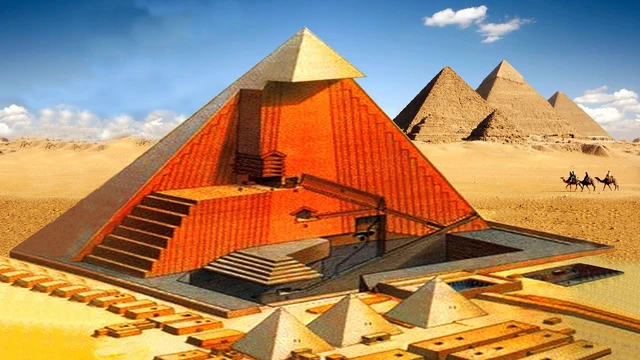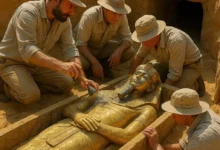The Pyramids of Giza: A Newly Discovered Underground Structure Shocks Archaeologists

The Pyramids of Giza: A Newly Discovered Underground Structure Shocks Archaeologists
The Great Pyramids of Giza have long captivated the world with their enigmatic origins, architectural brilliance, and hidden secrets. Now, a groundbreaking discovery has added yet another layer to their mystery—an enormous underground structure stretching approximately two kilometers beneath the Giza Plateau. This revelation has left archaeologists and Egyptologists stunned, reigniting debates about the true purpose and history of these ancient monuments.
A Hidden World Beneath the Sand
Recent advancements in ground-penetrating radar and satellite imaging have uncovered what appears to be an extensive subterranean complex hidden beneath the pyramids. The discovery was made by an international team of researchers who were scanning the region for potential unknown chambers. What they found was beyond expectations—a vast underground network of tunnels, chambers, and possibly undiscovered tombs lying deep beneath the surface.
While the full extent of the structure remains unclear, early data suggests that it may be an elaborate network of passageways that could predate even the pyramids themselves. Some experts speculate that it could be a lost necropolis, a ceremonial complex, or even an ancient storage system used by the builders of the pyramids.
Theories and Speculations
The discovery of this massive underground network has sparked numerous theories regarding its origin and function. One of the most compelling suggestions is that the tunnels could have served as a hidden burial site for high-ranking officials or even pharaohs whose tombs have yet to be uncovered. Ancient Egyptian records have hinted at the existence of secret burial sites beneath the pyramids, but no concrete evidence had ever been found—until now.
Others propose that the underground system could have been a hidden route for religious or ritualistic practices. The ancient Egyptians were known for their elaborate funerary traditions, and a concealed passage beneath the pyramids could have played a significant role in their beliefs about the afterlife.
More speculative theories suggest that the underground structure could be linked to a lost civilization or an advanced building technique that we are yet to fully understand. Some alternative historians even argue that these passageways could be remnants of an unknown chapter in human history.
Challenges in Exploration
Despite the excitement surrounding this discovery, archaeologists face significant challenges in exploring the underground structure. The area beneath the pyramids is fragile, and any excavation efforts must be approached with extreme caution to avoid damaging the ancient monuments above. Additionally, the shifting sands and high levels of humidity present further obstacles to researchers attempting to map the site.
Egyptian authorities are now working closely with leading archaeologists and technology experts to determine the best approach for further investigation. The goal is to use non-invasive methods, such as 3D mapping and robotic exploration, to gather more information before any physical excavation takes place.
What’s Next?
The discovery of this underground structure beneath Giza has reignited global interest in Egypt’s ancient wonders. While there is still much to learn, this finding has the potential to reshape our understanding of the pyramids and the civilization that built them. Could these hidden chambers reveal new secrets about the pharaohs, their rituals, or even a lost chapter of history?
For now, the world eagerly awaits further revelations as scientists and archaeologists continue to explore what lies beneath the sands of Giza. One thing is certain—the pyramids may be even more mysterious than we ever imagined.




